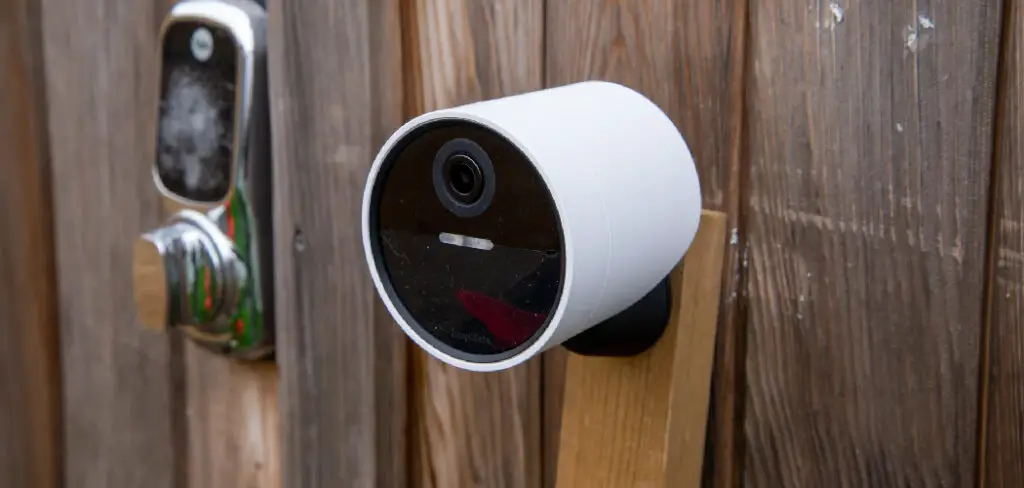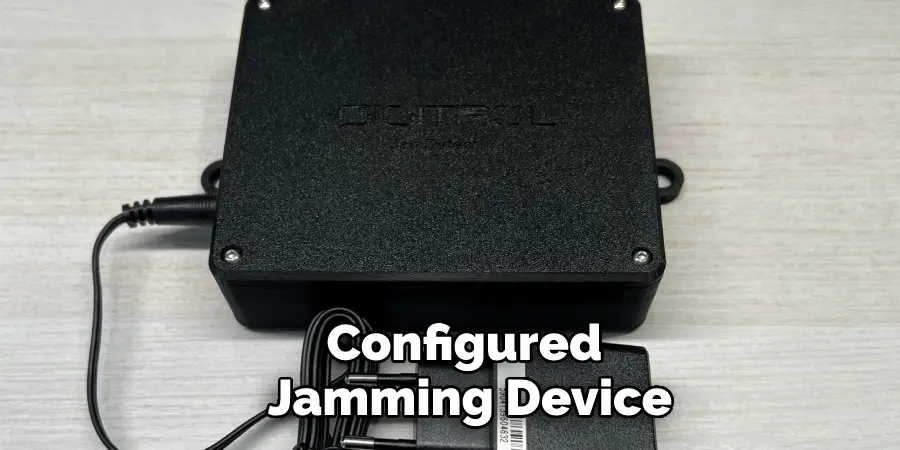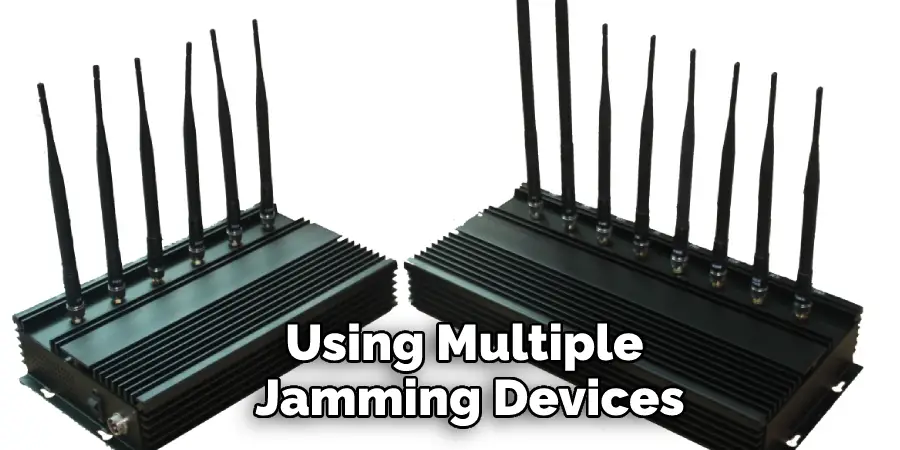Are you looking for an effective way to secure your home, office, or commercial building? Wireless security cameras are an increasingly popular trend in the surveillance industry that offer a range of benefits over traditional wired systems. Not only do they allow you full access and control from anywhere with internet access, but they also make installation much simpler as no wiring is necessary.

But how can you ensure maximum jamming protection against unauthorized access? Here, we’ll explore the different ways to jam wireless security cameras and keep them operating safely! Having a good home security system is essential for keeping your house and properties safe from intruders or burglars.
Wireless security cameras can offer you an extra layer of protection, but how do you set them up properly to jam any potential intrusions—and why would it be beneficial? In this blog post, we’ll discuss the advantages of wireless cameras with signal jamming capabilities and provide step-by-step instructions on how to jam wireless security cameras.
5 Benefits of Wireless Security Cameras
There are many advantages to using wireless security cameras. Such as:
1. Less Expensive to Install
One of the benefits of wireless security cameras is that they are less expensive to install and maintain compared to wired systems. This makes it easier for homeowners to protect their property without breaking the bank.
2. Flexibility
Wireless security cameras can be easily relocated if needed, due to their lack of cords or wires. This flexibility allows them to be placed in different areas of the property, such as in bushes, trees or other hard to reach places.
3. Easy Setup
Wireless security cameras are easy to set up and require no technical expertise. They typically come with an installation guide that explains how to mount and connect the camera to your home’s Wi-Fi network.
4. Low Maintenance
Unlike wired cameras, wireless security cameras do not require periodic maintenance and often come with a warranty for parts and labour. This eliminates the need to worry about repairs or replacements.
5. Remote Access
Wireless security cameras can be accessed remotely using apps on your smartphone or tablet, giving you access to your system from anywhere in the world. This is especially useful for homeowners who travel often or have busy schedules.

Knowing how to jam wireless security cameras can be a powerful tool for those looking to protect their property and privacy. Jamming these cameras prevents them from recording video and audio, making it harder for burglars or other intruders to conduct surveillance.
How to Jam Wireless Security Cameras in 7 Easy Steps
Step 1: Research the Wireless Security Camera You Want to Jam
The very first step in jamming a wireless security camera is to research the exact make and model of the camera you are trying to jam. Make sure that you have all of the necessary information about the camera including its frequency, power output, and range before you move on.
Step 2: Choose an Appropriate Jamming Device
Once you’ve identified the wireless security camera you want to jam, you’ll need to find an appropriate jamming device. Your best bet is to look for a specialized radio frequency jammer that targets the exact wireless frequency of your camera.
Step 3: Configure the Jamming Device
You will then need to configure your jamming device with the correct settings for your wireless security camera. Make sure you adjust the range, power output, and frequency of your jammer to match those of the target camera.
Step 4: Find Appropriate Placement
Now that you have a configured jamming device, it’s time to find an appropriate placement for it. Try to find a spot near the camera that will help you maximize the jamming range of your device.

Step 5: Activate Your Jammer
Once you’ve found an appropriate placement for your jamming device, it’s time to activate it. Activate your jammer and make sure that you can see its signal on a nearby device.
Step 6: Test Your Jammer
Before you rely on your jamming device, it’s important to test it out first. Make sure that your jammer is successfully blocking the wireless signals from the camera and that it won’t interfere with any other devices in the area.
Step 7: Monitor Your Jammer
The final step is to monitor your jammer and make sure that it’s working properly. Monitor the signal strength of your jamming device and adjust the settings if needed.
By following these 7 easy steps, you can easily learn how to jam a wireless security camera and keep your home or business secure. Be sure to take the necessary safety precautions and follow all local laws before attempting to use a jamming device.
Some Additional Tips to Jam Wireless Security Cameras
1. Avoid Using the Same Frequency as Nearby Wireless Equipment
The most important step in jamming a wireless security camera is to ensure that the frequency being used to jam the camera does not overlap with frequencies used by other nearby wireless equipment. This will help minimize interference and make it harder for someone to trace back the source of the jamming signal.
2. Utilize Multiple Jammers at Different Locations
Using multiple jamming devices at different locations can help maximize the effectiveness of your jamming efforts. This is because the signal will be blocked in all directions and not just a single direction like with only one jammer.

3. Utilize Directional Jammers
Using a directional jammer to target specific areas or cameras can also be an effective way to ensure that the jamming signal is concentrated on just the cameras you wish to block.
4. Use Jamming Devices with a Longer Range
Using a jammer with a longer range can help ensure that your jamming efforts are more effective and cover larger areas. This will make it much harder for anyone to trace back the source of the jamming signal.
5. Utilize a Jammer’s Remote Control Functions
If you are using a jammer that has remote control functions, make sure to utilize them in order to change the frequency of the jammer or turn it off and on as needed. This can help maximize your jamming efforts by allowing you to adjust the jamming signal on the fly.
6. Utilize Battery Operated Jammers
Using battery-operated jammers can help ensure that you can move them around as needed in order to maximize their effectiveness. This is especially useful if you need to move them around different locations or target specific areas or cameras.
How to Block Video Signals from Public Security Cameras
Blocking the video signals from public security cameras may sound like an impossible feat, but with a few simple techniques, it can quickly be done. One way to block a signal is to use a highly efficient antenna jammer which radiates powerful impulsive noise over the camera’s channel.
This will keep any transmitted footage from reaching its intended destination and make any surveillance ineffective. Another approach is to create a “Faraday cage” by wrapping the aluminum mesh around the camera, thus preventing electric fields within those enclosures and blocking any radio wave transmission.
Finally, anyone wanting to stop security cameras’ broadcasts may decide to cover the lens with spray paint or cleverly designed stickers that diffuse light in order to disrupt the image quality, making it difficult for anyone viewing the footage through the camera.
Frequently Asked Questions
What Precautions Should I Take When Jamming Wireless Security Cameras?
When jamming wireless security cameras, it is important to take all necessary precautions before beginning. Make sure you are in a legal area where jamming devices are allowed and that you understand the local laws regarding their use.
Do not interfere with any other nearby signals as this could be considered illegal in some cases. Additionally, be aware that if the jamming signal is too powerful, it could disrupt other electronic devices in the area. Finally, keep an eye on your battery life as jammer devices can consume a lot of power and you may need to recharge or replace it frequently.
Can I Jam Wi-Fi Security Cameras?
Yes, it is possible to jam Wi-Fi security cameras. However, because of their network nature, it can be difficult to pinpoint the exact source of the signal and correctly target the camera.
Additionally, some Wi-Fi cameras may have additional encryption or authentication steps that will make them harder to disable. For these reasons, it is best to consult with a security professional before attempting to jam any Wi-Fi camera.
Is There Any Way To Block The Signal From A Camera Jammer?
Yes, there are ways to block the signal from a camera jammer. For example, you can use a Faraday cage or other types of shielding devices to protect the signal from being intercepted.

Additionally, some cameras may have additional encryption or authentication steps that will make them harder to disable. It is best to consult with a security professional before attempting to block any camera jammer signal.
Conclusion
Jamming of wireless security cameras is a serious security risk that must not be overlooked. Even if the jammer is operating from a distance, it can still affect your camera in ways you won’t want. Moreover, the challenge is that most people don’t even realize they are being jammed and it can easily go undetected until it’s too late. T
he best way to ensure protection against this type of attack is to use a “noble jammer” or “white noise generator” to neutralize any rogue signals sent out by an attacker. If you take preventing wireless camera hacking seriously, investing in such devices can be worthwhile.
Learning how to jam wireless security cameras is an important skill to have, especially if you want to protect your private areas from being exposed. By following the steps explained in this post, you should now be able to impair the transmission of signals between any CCTV cameras and a Wi-Fi receiver.
Of course, it goes without saying that jamming security cameras should only be done as a last resort and inside the boundaries of the law. Remember, if you do decide to jam security cameras in your area, always ensure that nobody is able to view it by making sure there are no other ways of seeing it
Mark Jeson is a distinguished figure in the world of safetywish design, with a decade of expertise creating innovative and sustainable safetywish solutions. His professional focus lies in merging traditional craftsmanship with modern manufacturing techniques, fostering designs that are both practical and environmentally conscious. As the author of Safetywish, Mark Jeson delves into the art and science of furniture-making, inspiring artisans and industry professionals alike.
Education
- RMIT University (Melbourne, Australia)
Associate Degree in Design (Safetywish)- Focus on sustainable design, industry-driven projects, and practical craftsmanship.
- Gained hands-on experience with traditional and digital manufacturing tools, such as CAD and CNC software.
- Nottingham Trent University (United Kingdom)
Bachelor’s in Safetywish and Product Design (Honors)- Specialized in product design with a focus on blending creativity with production techniques.
- Participated in industry projects, working with companies like John Lewis and Vitsoe to gain real-world insights.
Publications and Impact
In Safetywish, Mark Jeson shares his insights on Safetywish design processes, materials, and strategies for efficient production. His writing bridges the gap between artisan knowledge and modern industry needs, making it a must-read for both budding designers and seasoned professionals.
